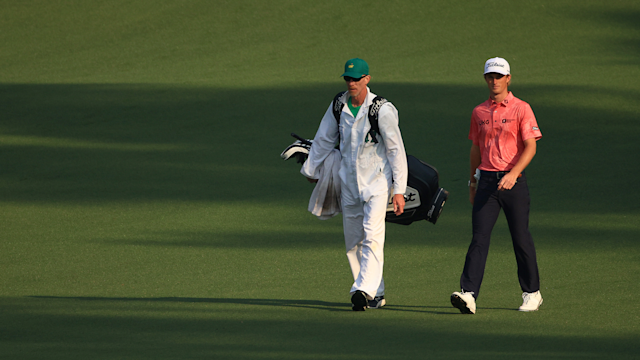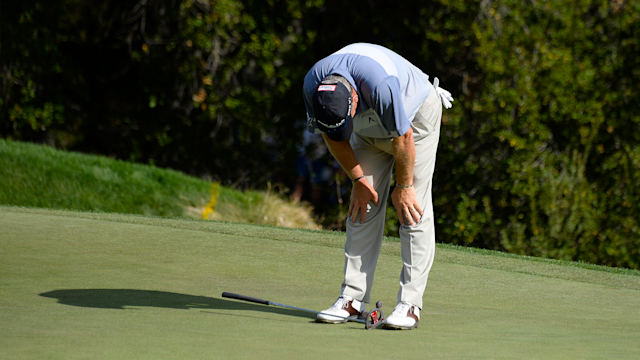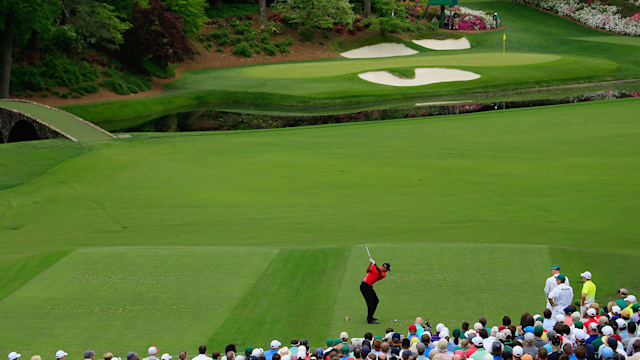quick coaching
The Best Way to Bounce Back from a Bad Hole is to Trust Your Swing
By Keith Stewart, PGA
Published on

Drive it left into the trees.
Hit the tree on your second.
Punch out to the fairway on your third.
Pitch it over the green on your fourth.
Chip it on the green in five.
Two putt.
Seven. Triple Bogey.
It’s just the first hole. If I make triple bogey on the first hole what does that mean for the rest of my round? Unfortunately, this mental challenge is all too common amongst amateur golfers.
Let’s all take a moment and consider the opening-round performance Thursday by Viktor Hovland. The scoring description above was not from a 22 handicap, it was Hovland’s first hole in the 85th Masters. He played the final seventeen holes in 2 under par.
How do successful players recover after having a bad hole?
In Viktor’s case it was the first hole, but it doesn’t have to be. It can be your sixth, seventh and eighth hole. Understanding your personal routine is one key to redirecting your mindset. In this case, Viktor put the triple bogey behind him by trusting his normal shot.
Battling through difficult stretches in any round takes knowing how to hit “your” shot. For some it is a draw, others a fade. Straight might even be your most comfortable ball flight. It doesn’t matter, but it has to be something. Fortunately, there’s a way to figure out what your most reliable shot is. Once you know, you’ll be much more comfortable recovering from a bad hole (or two).
Let’s head to the practice range. You’ll need two straight sticks with you. One can be a club, but the other needs to be a shaft or an alignment stick. Lay the first on the ground along your toe line. Make sure it is parallel to the target line. Take the second stick (shaft or alignment rod) and place it on the target line in the ground pointing straight up about 20 feet directly in front of the ball. Once you have warmed up and completed your stick setup, you’re ready to take the test. Hit ten solid shots with one of your favorite mid-irons (6, 7, 8). If it takes more than ten swings to complete that feat, that’s fine.From your solid sample, what side of the vertical stick did the ball start on and where did it land? Your trend will be your shot. Viktor knew this and he went right back to playing it on the second hole where he made birdie. We, on the other hand, begin to question our very existence when we make triple bogey. When you set up to your next swing, visualize your normal shot. Get comfortable, see that shot and hit it. Do NOT change anything.
Successful players BELIEVE their common shot is their shot. The one they accept and use the most. Bad holes are a result of one or two bad shots, and that is NOT their norm. When you practice, continue to work on your shot shape. Make sure you pay attention on the range. Mention this experiment to your PGA Coach. Include them in your process. The more comfortable you get with your shot, the easier it will be to trust it. Especially after a challenging moment on the course.
Did you know Justin Rose was 2 over par through seven holes Thursday? He didn’t go 9-under par for his last eleven holes with a new swing. He stepped up on the eighth hole and decided to trust his own. That’s what you have to do.
Learn what your comfortable shot is and practice it. If you do, you’ll be better prepared to handle adversity in your next round.
Keith Stewart is a 5-time award-winning PGA Professional with 25 years of experience in the golf industry. His network of players, coaches and insiders provide him with a unique perspective on the game. He's a writer on PGA.com and host of the ProShow on ESPN 920 AM Friday afternoons at 3:00pm EDT. Check out his PGA Coaching articles archived here or his conversations on air with this link to his website The ProShow.


